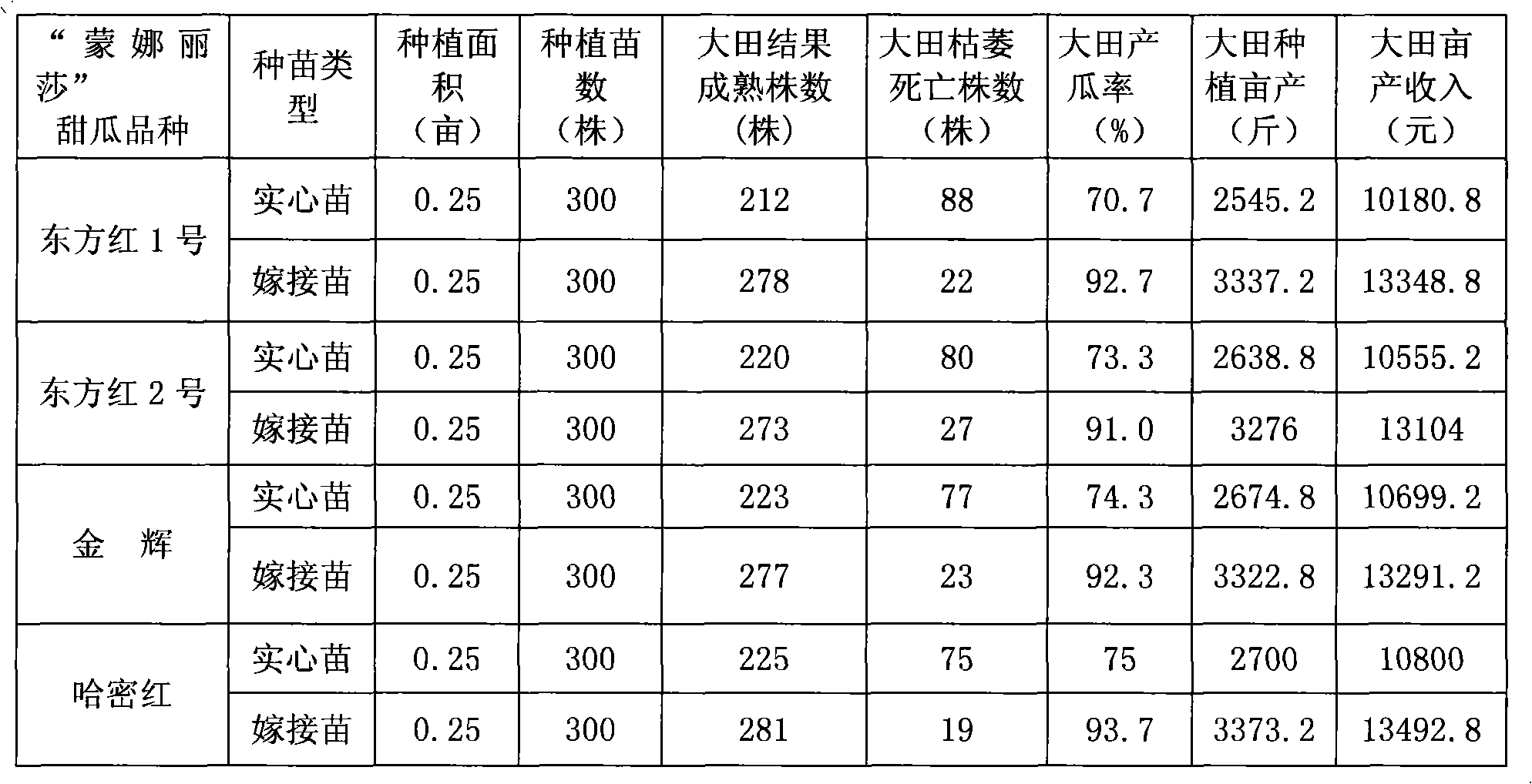Method for grafting Hami melons in subtropics
A technology of cantaloupe and grafted seedlings, applied in the fields of botanical equipment and methods, horticulture, application, etc., can solve problems such as loss, and achieve the effects of strong stress resistance, high melon yield in the field, and good taste.
- Summary
- Abstract
- Description
- Claims
- Application Information
AI Technical Summary
Problems solved by technology
Method used
Image
Examples
Embodiment 1
[0008] Embodiment 1: a kind of grafting method of subtropical Hami melon,
[0009] (1) Preparations before grafting:
[0010] (1) Preparation of nutrient soil: nutrient soil adopts a mixture of peat, perlite and vermiculite, its mixing ratio: peat: perlite: vermiculite=7: 2: 1, fully mix, put into the corresponding container, wait for use;
[0011] (2) planting environment of grafting material: the temperature in the greenhouse is controlled at 25-30 ℃, humidity is about 60%;
[0012] (3) Preparation of rootstock: use the muskmelon in the subtropical region as the rootstock, soak the melon seeds, and raise seedlings in a nutrient bowl filled with nutrient soil for 5 to 10 days. Within the range of 32 °C, the temperature is controlled within the range of 22 °C to 28 °C for 6 to 10 days after seedling cultivation, and it is enough to cultivate until the two cotyledons of the rootstock are fully unfolded and the true leaves are exposed;
[0013] (4) Preparation of melon seedli...
PUM
 Login to View More
Login to View More Abstract
Description
Claims
Application Information
 Login to View More
Login to View More - R&D
- Intellectual Property
- Life Sciences
- Materials
- Tech Scout
- Unparalleled Data Quality
- Higher Quality Content
- 60% Fewer Hallucinations
Browse by: Latest US Patents, China's latest patents, Technical Efficacy Thesaurus, Application Domain, Technology Topic, Popular Technical Reports.
© 2025 PatSnap. All rights reserved.Legal|Privacy policy|Modern Slavery Act Transparency Statement|Sitemap|About US| Contact US: help@patsnap.com

